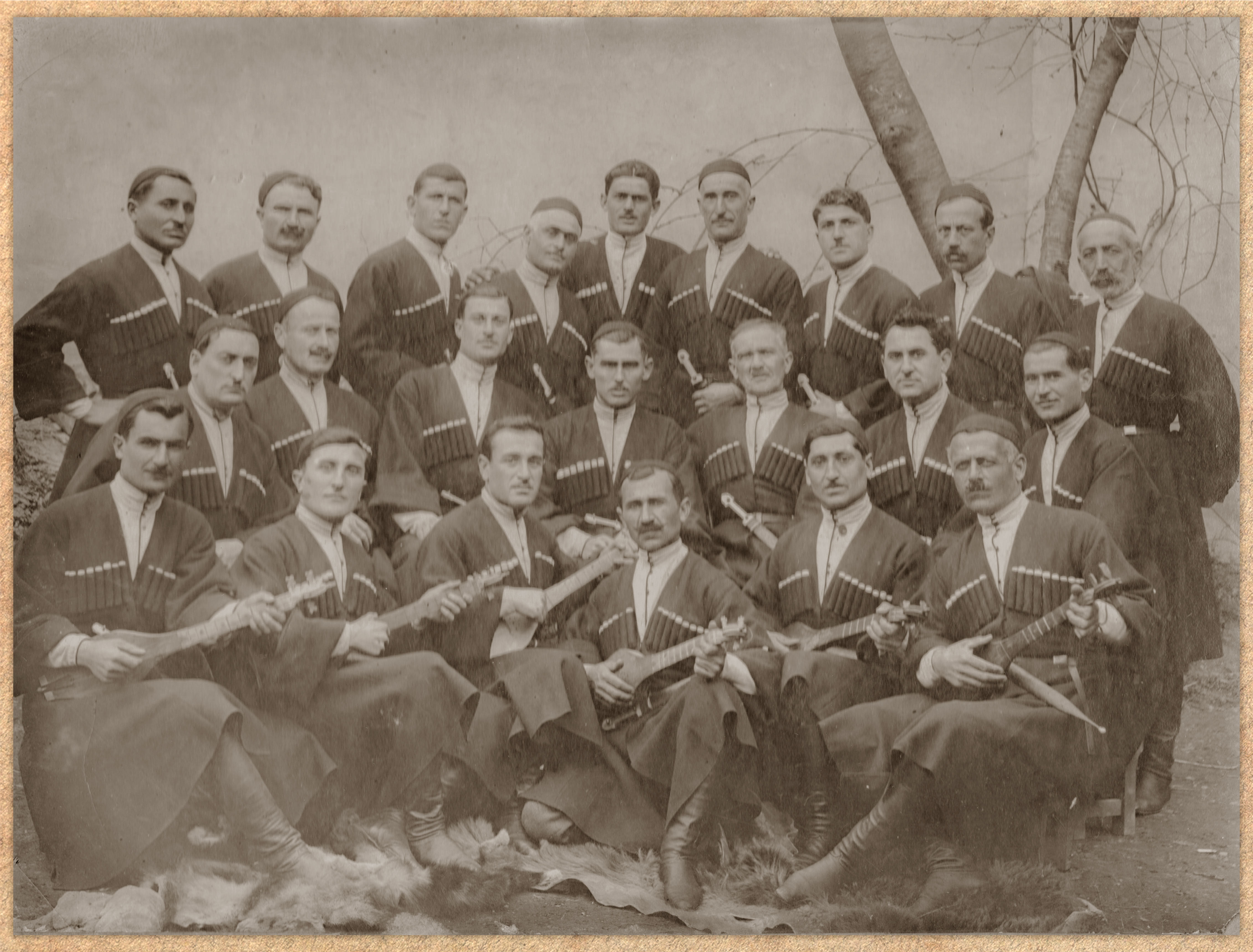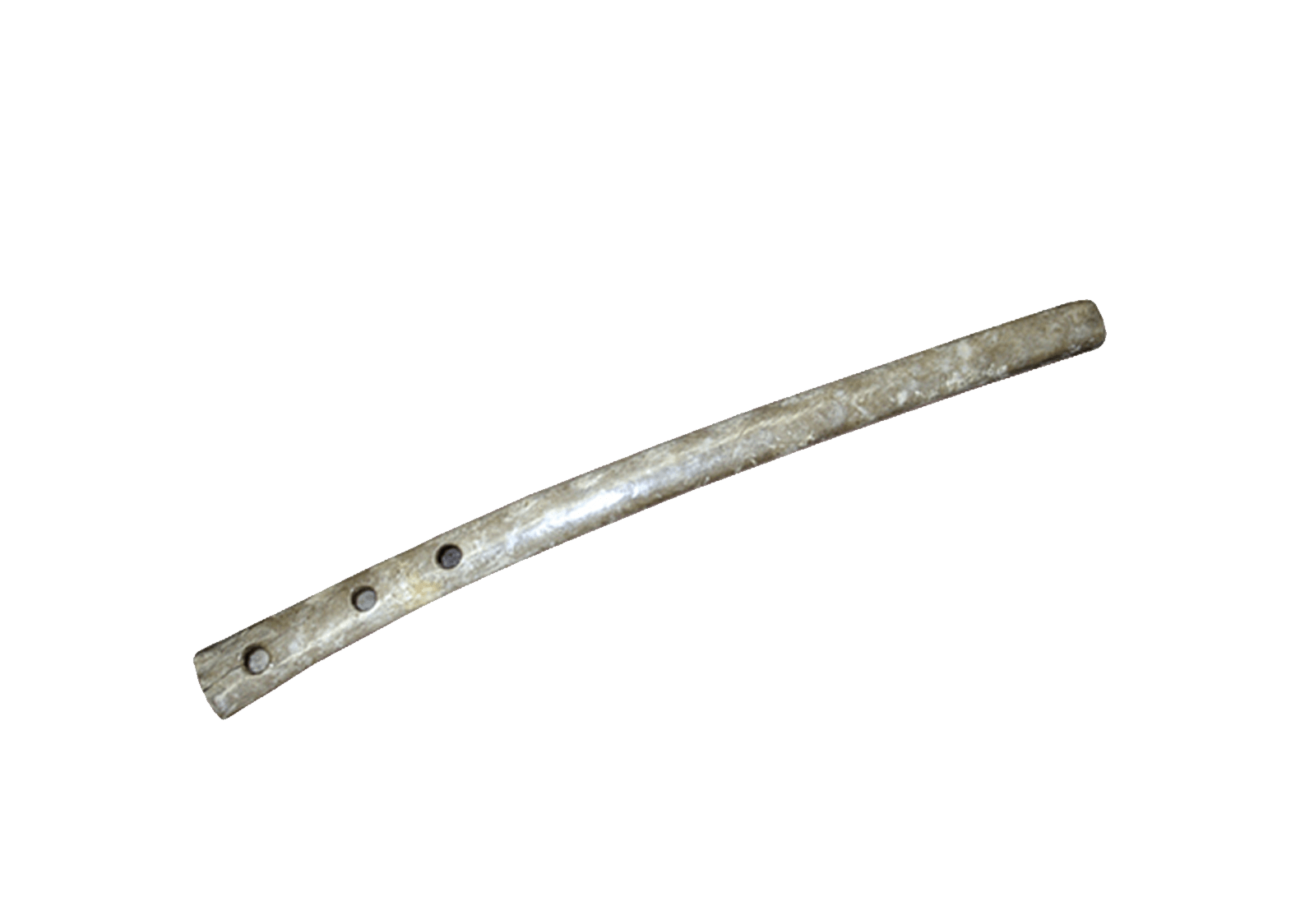The Musical Dialect of Kakheti: Ornamentation and Performance Features
It is common knowledge in Georgian music scholarship that songs from the regions of Kartli and Kakheti are generally considered to be part of one “Kartl-Kakhetian” musical dialect. There are various reasons and arguments for this categorization, and there are certainly many similarities between the styles of the two neighboring regions. Performers of Kartl-Kakhetian songs, however, will point out that there are more differences. In this article, I will discuss and present one of the most important aspects of Kakhetian singing that set it apart: melisma (a musical term for a singing a single syllable on multiple pitches in succession, sometimes considered an “ornament”) and the particular way melismas are performed in Kakhetian song.
One of the main musical characteristics of Kakhetian singing is the use of melisma, which in Georgian is often called chakhveva, meaning “wrapping around,” “tangling,” or “turning.” At first glance, it may seem that Kakhetians today have forgotten their songs, but when I began to gather materials about Kakhetian singing among the people, I was surprised by their memory and love for these songs. It turned out that people do not forget their folklore so easily.
For many years I have been collecting information related to practices of ornamentation, through the process of working with Kakhetian singers and song masters. I am presenting here the results of my observations, which are based on interviews with singers recorded in 2016 and 2017,[1] as well as the musical analysis of old and new recordings and as my own practical experience as a performer of Kakhetian songs.[2]
Melodic ornaments carry utmost importance in Kakhetian songs. There is no Kakhetian song in which ornamentation does not appear, even to a small degree, although long table songs in free meter are especially distinguished by its abundance. In Kakhetian songs, ornamentation performs the function of embellishing, decorating, and adorning; it gives emotional depth and accentuates the style. Performing ornaments well requires talent and improvisational skills from the singer. As the folk singer Jemal Chotalishvili remarked, “Chakhveva beautifies; it makes beautiful sounds. You can’t sing ‘straight,’, or else the song will come out dry. It takes talent, and not everyone can do it.” In Kakhetian songs, ornamentation has the same function as in wood or stone carving. It is such an essential feature for Kakhetian singing that it is impossible to imagine a song from this region without it.
According to the information I obtained, Kakhetian singers use different terms to refer to different varieties of ornamentation: chakhvev", chakhuch’uch’eba, variatsia, chak’ak’aneba, charak’rak’eba, chagvirsteba ksova, kargva, chukurtma, movaraqeba, chagalobeba, narnar, chabulbuleba, and others. These terms may refer to a activities of decorating (chukurtma: carving, movaraqeba: gilding), ways of making textiles (gviristi: stitching, ksova: weaving, kargva: embroidery), imitations of birds or nature (chak’ak’aneba: clucking, charak’rak’eba: chirping, chagalobeba: birdsong), circular motions (chakhveva: wrapping, chakhuch’uch’eba: coiling), or particular styles of performance (chanarnareba: from narnari, “soft voice,” chagalobeba: which can refer to chanting, galoba, as well as birdsong).
In my conversations with Kakhetian performers and through hearing the examples they demonstrated, I became convinced that these terms precisely describe specific ornaments and variations in performance. Among them, the most common and general term is chakhveva, which all singers interpret in the same way and which is found in all the songs of Kakhetian villages.
All singers approach chakhveva as a whole, not broken up into fragments—an entire phrase, rather than its constituent parts. Chakhveva can be categorized as “long” or “short,” depending on its duration. As a general rule, the chakhveva ornament cascades downward from higher to lower pitches, though some singers assert that upward movement is also possible.
One of the synonyms for chakhveva is variatsia, literally “variation.”. Although this is not a “folk” term, it is common among older singersand was apparently used by such choirmasters as Piruz Makhatelashvili, Misha Simashvili, Shakro Lomidze, and Vano Terterashvili. In some cases, it implies a downward movement with short, identical ornaments (as in the song “Ts’ints’qaro”), but it can also mean a downward movement with ornamental variations and modifications. When discussing the related terms chakhuch’uch’eba (coiling) and chukurtma (carving), performers do not identify specific characteristics but say that these also refer to the chakhveva style of ornamentation.
The term chagviristeba sometimes refers to a “short chakheva” taking place during passages of recitative to embellish the song, but it can also indicate a chakhveva that is well executed. According to Bidzina Pshavelashvili, a singer from Akhmeta, they used to use the term chagviristeba when someone sang a chakhveva beautifully.
The use of the term chak’ak’aneba was confirmed by almost all performers, with the notable exception of Andro Simashvili. It was very common in the Akhmeta district and in Kondoli, a village in the Telavi district. This term has more to do with the movement up and down in the high register as well as vocal vibration. This vibrato can also be referred to as trtolva (trembling), rkheva (oscillation), or k’ank’ali (shaking. Chak’ak’aneba was generally used to distinguish good singing, although, according to Jemal Chotalishvili, the people of Telavi “didn’t consider singers who vibrated in this way [chak’ak’anebul] to be real singers.” Closely related to chak’ak’aneba is charak’rak’eba, which refers to unconstrained but deliberate ornamentation in a high vocal register and is associated with a ringing timbre in the voice.
The terms kargva (embroidery) and ksova (weaving) are sometimes synonymous. According to Jemal Chotalishvili, kargva can be found in the “Mravalzhamieri” from Telavi, when the voice moves up and down on the vocables harulaelo and tarulaelo.
According to Ioseb Pshavelashvili, a singer from Kistauri, “generally speaking, kargva is also chakhveva, except that it is prolonged: when the upper voices weave [kargaven] the melody together, it requires great skill.”
The term ksova is related to chaksoveba, referring to “interweaving,” or weaving one thing into another. According to Ushangi Sharvashidze, a singer from Vanta, “chaksoveba" means finding a better variant and ‘weaving’ it into the song.”
Every singer is familiar with the term chagalobeba, which refers to a relatively quiet, calm manner of performance. (Galoba means “chant,” though it can also refer to birdsong.) According to Andro Simashvili, in the song “Artanuli Alilo” the upper voice moves down in chagalobebi—that is, in a calmer style of ornamentation, and it is only the middle voice that descends with the comes down in chakhveva ornamentation discussed above.
According to Ushangi Sharvashidze, the “Mravalzhamier” from Telavi is, in fact, a chant: “For anyone who understands singing, it is impossible not to see it as a chant"”
According to Eldar Chichiashvili, they also knew the term charnarnareba, a softening of the voice. It is used similarly to chakhveva and chak’ak’aneba, though more often in reference to a woman’s voice.
In the view of the older singers, ornamentation that is excessive or unnecessary do not decorate a song, rather spoiling and ruining it, making it lose its essence. As Ushangi Sharvashidze put it, “too much chakhveva is no good, it is not necessary. Better for the ornaments to be short, sharp, beautiful, and used in moderation.” According to Andro Simashvili, “moderate chakhveva is what makes worthy singing.”
There are differences in ornamentation between past singers of Kakhetian songs and more recent singers. This is easily confirmed by the comparative study of audio recordings. Older singers would not repeat the same ornamental turn twice in similar moments of the same song; the proportion of improvisation in ornamentation was much higher than it is with newer singers. This goes along with the view of the older singers that ornamentation is not an end in itself.
It is clear that each singer has their own particular repertoire of ornamentsation, though singers from the same village still resemble each other in style. According to my own observations, similarities and differences in ornamentation exemplify the traditions of different villages of Kakheti. In each village there are ornaments that local singers use especially often. These same ornaments can also be found in other villages, but in relatively small doses.
Most singers would agree that the middle voice, which in Kakhetian songs is comparatively more developed than the top voice, performs the most ornaments. It is also worth noting that ornamentation can occur in the bani or bass voice. According to Andro Simashvili, the second voice is the leader in “Alilo”: “He leads the song himself and makes variations [variatsia]. At the end, the first voice comes down in chagalobeba [shorter, quieter ornaments] while the second voice comes down in variations.” In this audio sample, from “Artanuli Alilo,” we hear the closing ornaments of the first and then the second voice.
We also find chakhveva in the bani voice. The bani part must have a turn in it, making its descents with a particular coiling motion. According to Archil Mosiashvili, a singer from Kistauri, “The first voice says what he has to say, the second one has to embellish it. The second voice has more ornaments, but it depends on the song. In some songs, the first voice is the lead and does more ornamentation. The bass has chakhveva in every song: when it moves to its lowest notes, it can’t just drop straight down, it makes a turning ornament. Without it the song will no longer have beauty.” Old audio recordings, for example from Shilda and Gurjaani, prove that ornamentation really does occur in the bani.
radition-bearers explain that the two upper voices perform ornaments “one after the other, taking turns.” Sometimes one leads and the other follows, sometimes neither gives up the lead, and there is a competition (for example, among singers from Telavi). Parallel, simultaneous ornamentation is rare.
Most singers think that ornamentation requires a relatively “covered” [mokhuruli] sound, that it works better that way, but there is a difference of opinion. According to a singer from Kondoli, Nasqida Chikadze, singing with a covered sound is not beautiful. “It is better if you sing ornaments with an open, carefree voice; you will make a more beautiful sound.”
My observations of Kakhetian song performance indicate that chakhveva involves a transition from one pitch to another with a specific, throaty sound. These ornaments can be long, with several notes, or short, with just two (the old Telavi singers called it a rolling roll). The character of the song itself may require short and long ornaments.
My research has shown that there are different options for short chakhveva. In this audio example, you will hear a few varieties of Kakhetian short ornaments. This, however, is by no means an exhaustive sampling.
Kakhetian songs are full of these ornaments and their combinations. When performing these ornaments, it is necessary to have moments of accent or stress, which dictate how the voice breaks in the throat. If we place these accents precisely, the ornament will be perfect. Accents and voice-breaking are required for every kind of ornament. This is also confirmed by performers. According to Jemal Chotalishvili, “You have to interrupt the sound […] it has to be cut off from the throat […] you have to accentuate the ornament, ‘put the brakes on’ in the flow of the sound.” According to Eldar Chichiashvili, “The ornaments involve a relatively soft breaking-off.” I think that the term “soft breaking-off” is the most fitting when describing the ornamentation technique.
Working on the ornamentation of Kakhetian song has also brought up an important issue related to the performance of the Kartl-Kakhetian chant. In the course of my research, I have come to the conclusion that ornamentation should be present in the performance of the Kartl-Kakhetian chants.
In my study of melisma and ornamentation in Kakhetian singing, the necessity of also researching the particular ornamentation style in Kartlian songs naturally arose. At this stage, I have limited myself only to the Kakhetian songs, which still provide plenty of interesting and important issues to be discussed.
[1] The singers who shared their stories include my teacher, Andro Simashvili and the following singers from the Telavi ensemble: Jemal Chotalishvili, Ushangi Sharvashidze from Vanta, Ioseb Pshavelashvili and Archil Mosiashvil from Kistauri, Nasqida Chikadze from Kondoli, Domenti Mestvirishvili from Kurdghelauri, Bidzina Pshavelashvili from Akhmeta, and Eldar Chichiashvili from Matani. These men provided me with a lot of important data and opinions on issues related to the performance of Kakhetian songs.
[2] Since 2000 I have been studying Kakhetian song under the guidance of Levan Abashidze, a song master from Tsinandali who has shared with me his remarkable knowledge on questions of performance.
Cover Photo - Choir of Telavi singers. Head Phiruz Makhatelashvili




